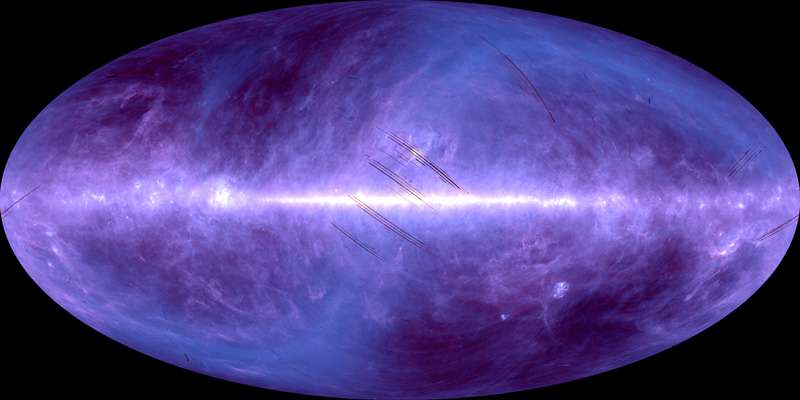High resolution far-infrared all-sky image data release

A research group led by a University of Tokyo researcher, using the AKARI satellite's Far-Infrared All-Sky data, have created all-sky image maps and released the full database to researchers around the world via the Internet.
A full-fledged infrared astronomical satellite launched by Japan, the infrared astronomical satellite AKARI was sent into orbit on February 22, 2006, and completed detailed observation of more than 99% of the entire sky in the far infrared by August 26, 2007. The satellite subsequently made observations of the near-infrared up to November 24, 2011.
Far-infrared light is the key wavelength range for investigating the formation processes of stars and planetary systems. By observing far-infrared light, we can reveal the distribution of the interstellar medium, or gas and dust in interstellar space, as well as the processes of star formation within it.
Assistant Professor Yasuo Doi at the Graduate School of Arts and Sciences and his collaborators using infrared data acquired by AKARI, created complete all-sky image data at the wavelengths of 65, 90, 140 and 160 micrometers with a resolution of 1 arcminute to 1.5 arcminutes (1 arcminute is 1/60th of a degree). The new AKARI image maps have four to five times better resolution than that of conventional far-infrared all-sky images, as well as data at longer wavelengths.
The AKARI image data are expected to contribute to a very wide variety of astronomical studies, for instance in areas of star and planet formation and galaxy evolution. Furthermore, closer examination of the temperature and distribution of the interstellar medium allows us to measure precisely cosmic background radiation, which is essential to investigate the origin of the universe.
More information: "The AKARI Far-Infrared All-Sky Survey Maps", Publications of the Astronomical Society of Japan: 2015/06/4, DOI: 10.1093/pasj/psv022
Provided by University of Tokyo



















